Digital technology is everywhere. From the phone in your hand to the smartwatch on your wrist — it’s the tech that runs our modern world. But what exactly is digital technology? In simple terms, it’s any system that uses computers, software, or digital tools to process data and help us solve problems, connect with others, and live smarter.
Let’s break it down in an easy, human-friendly way — no tech jargon, just real-life explanations.
💡 Understanding the Basics
🔍 Definition of Digital Technology
Digital technology refers to electronic tools, systems, devices, and resources that generate, store, or process data. It involves binary code — a series of 0s and 1s — to run everything from apps and websites to digital cameras and robots.
According to IGI Global, digital technology “includes everything from digital devices and tools to applications used for communication, learning, entertainment, and productivity.”
🆚 Analog vs Digital: What’s the Difference?
Think of analog as your grandma’s radio — it works on physical signals like sound waves. Digital, on the other hand, breaks everything into bits (literally — 0s and 1s), making it faster, more accurate, and easier to replicate.
📜 Brief History of Digital Technology
1940s – First digital computers developed.
1980s – Personal computers became popular.
2000s – Smartphones took over.
2020s – AI, IoT, and cloud services dominate.
🧩 Key Components of Digital Technology
🖥️ Hardware
Physical components like computers, phones, and gadgets fall under hardware. These are the backbones of digital systems.
💽 Software
Software is the invisible worker — apps, operating systems, browsers — that tells the hardware what to do.
🌐 Digital Networks
These include Wi-Fi, mobile data, and the internet. They connect devices, people, and systems across the globe.
📱 Popular Examples of Digital Technology
📱 Smartphones and Tablets
They let us call, chat, browse the web, shop online, and even run our businesses.
📺 Smart TVs and Streaming Devices
These allow us to binge-watch Netflix, control screens with voice, and even connect to the internet.
💻 Computers and Laptops
From school assignments to professional work, they’re still the workhorses of the digital world.
⌚ Wearables (Smartwatches, Fitness Trackers)
These track steps, monitor health, and even let you reply to messages without picking up your phone.
⚙️ How Digital Technology Works
📊 Binary Language – The Digital Foundation
At the heart of digital tech lies binary code — everything is broken down into 0s and 1s that machines can understand.
🔄 Input, Processing, Output Cycle
You press a key (input), the device thinks (processing), and displays it on screen (output). Simple but powerful.
☁️ Cloud Computing & Data Storage
No need for bulky drives. Cloud services like Google Drive and Dropbox let you store files online and access them anywhere.
🏠 Uses of Digital Technology in Daily Life
🎓 Education and Learning
E-learning platforms, digital whiteboards, and apps like Khan Academy or Google Classroom make education interactive and accessible.
🏥 Healthcare and Medical Innovation
Digital tech powers everything from MRI machines to fitness apps, improving both prevention and treatment.
💼 Business and Communication
Tools like Zoom, Slack, and Microsoft Teams keep businesses running even when employees are remote.
🎮 Entertainment and Media
From YouTube and Spotify to online games and VR — digital tech brings entertainment to your fingertips.
✅ Advantages of Digital Technology
⚡ Speed and Efficiency
Digital systems process data faster than humans ever could. Instant messaging, real-time tracking, fast calculations — all thanks to tech.
🌍 Easy Access to Information
Got a question? Google it. Digital tech has opened the doors to knowledge like never before.
🔗 Global Connectivity
From rural towns to busy cities, digital technology connects people from opposite sides of the planet in real time.
⚠️ Challenges and Drawbacks
📉 Digital Divide
Not everyone has access to modern tech. This gap, called the digital divide, limits education and opportunities in poorer areas.
🔐 Privacy and Security Issues
Hacks, data leaks, and surveillance make privacy a growing concern. Always use strong passwords and enable 2-factor authentication.
🤖 Overdependence on Tech
Many of us can’t imagine life without our phones. While helpful, overreliance can hurt mental health and real-world social skills.
🚀 The Future of Digital Technology
🧠 Artificial Intelligence and Automation
AI is teaching machines to think — from chatbots to self-driving cars, automation is changing how we live and work.
🕶️ Virtual and Augmented Reality
VR and AR are reshaping gaming, education, and shopping by blending the digital with the real world.
📡 Internet of Things (IoT)
From smart fridges to connected cars, IoT allows devices to “talk” to each other and automate tasks without us lifting a finger.
🔚 Conclusion
So, what is digital technology?
It’s the beating heart of the modern world. Whether you’re texting a friend, watching a video, learning online, or seeing a doctor — chances are, digital technology is behind it. It has transformed how we think, work, and live. The more we understand it, the better we can use it to improve our lives — and maybe even the world.
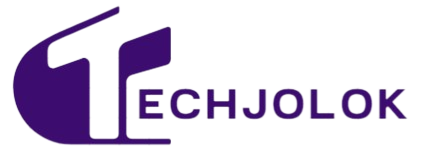



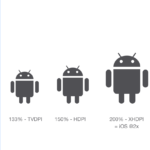
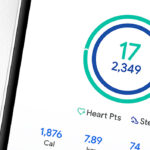


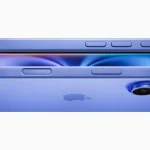


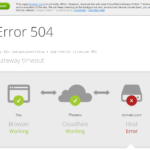





Leave a Review